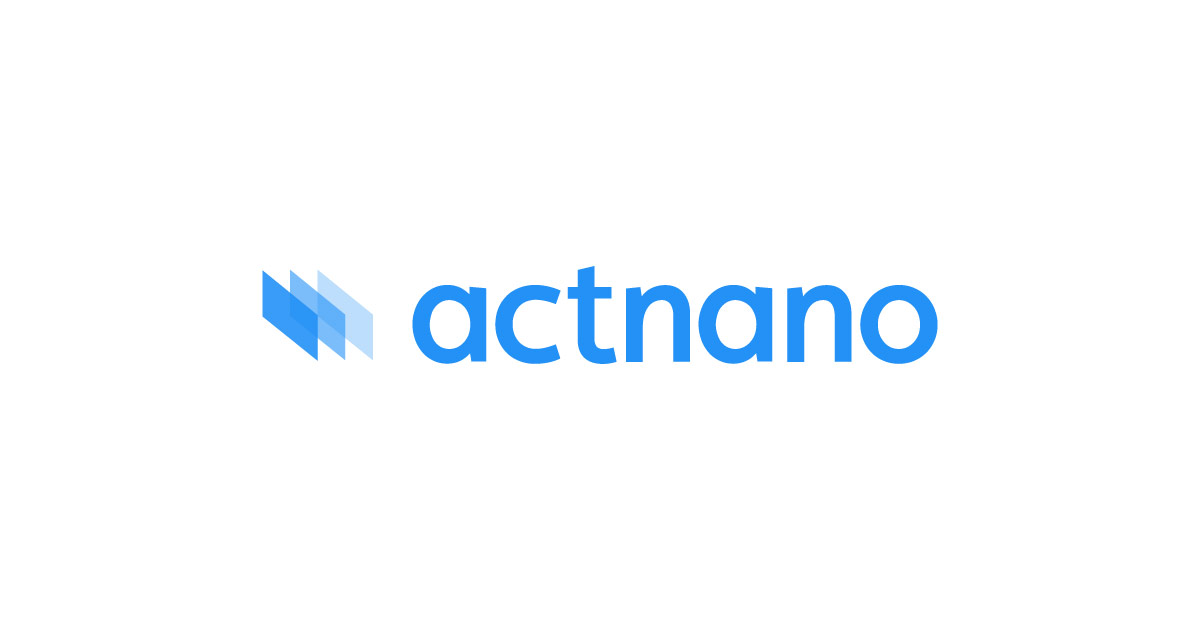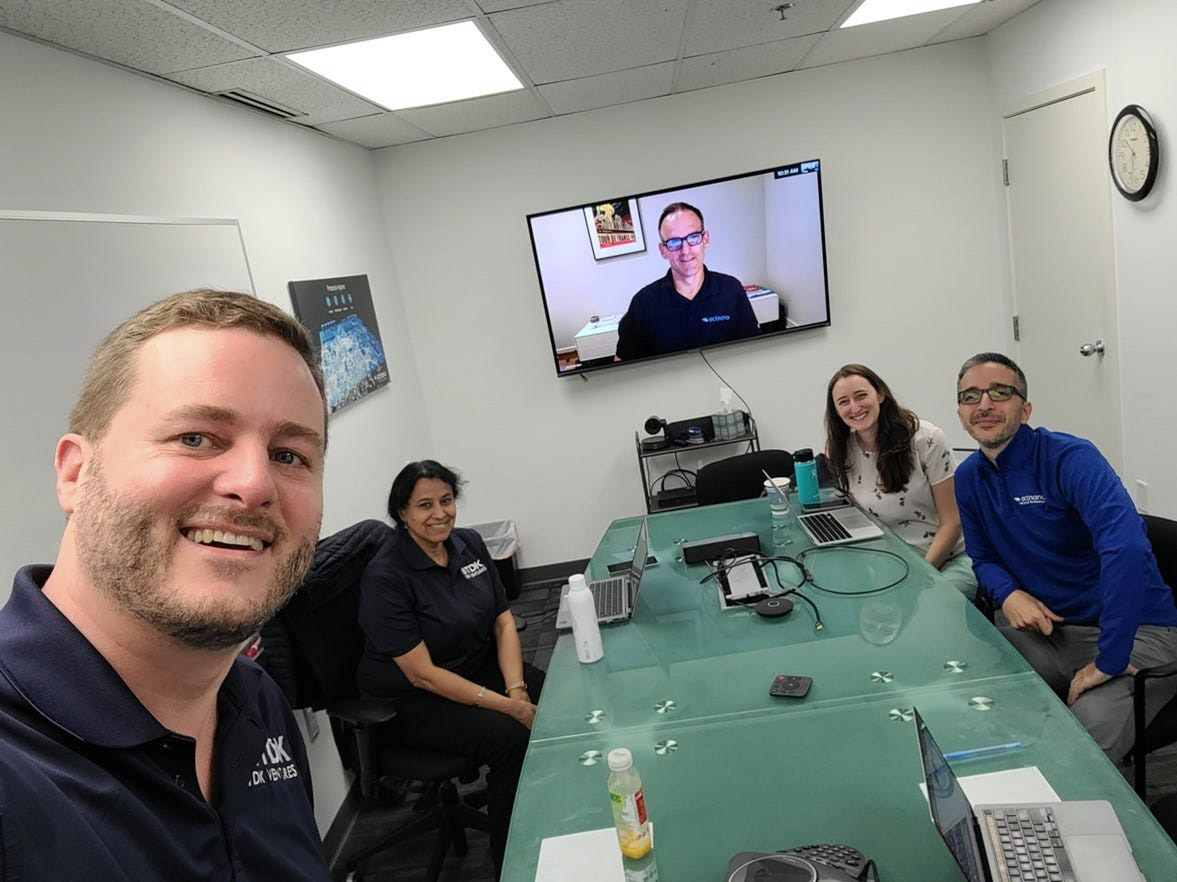Introduction
Overview
Today’s electronic devices are increasingly used for safety-critical applications, and it is crucial to find new and innovative ways to protect them. Tech startup actnano has developed a revolutionary nanotechnology gel-state coating that provides full conformal protection for electronics that is completely hydrophobic, reworkable, low cost, and is made of safe (nontoxic) materials. In backing actnano, TDK Ventures seeks to invest in a better, more sustainable, future by ensuring the tech of tomorrow works when we need it and where we need it regardless of environment.
Historical Context & Background
As technology has progressed and electronics have become more and more part of our daily lives, innovators have had to keep pace and ensure the critical and often very sensitive components that make them tick can operate wherever the user may take them. It’s estimated there are over seven billion electronic devices currently in use around the world, and a huge number of them are frequently in contact with harsh environmental factors. Sunlight can render a device unusable when it overheats, water and dust particles can destroy circuits, extreme cold or hot temperatures have been known to cause performance problems or even irreparable damage. Even our transportation is now reliant on electronics. Cars are becoming increasingly filled with circuitry not just to support comfort features, but to make the vehicle run. Protective measures against environmental factors that could render devices inoperable is an absolute must, and especially in the automotive industry conditions can get pretty extreme.
A century ago, when humanity was less dependent, electronic protection measures could look as simple as wrapping rubber tubing over wires. As our electronics and circuitry has gotten more complicated — not to mention smaller and more delicate — protection solutions have become an engineering challenge in their own right. The challenge has been faced in a number of ways, but by and large the most significant and promising solution has been the use conformal coatings. In 1947, Michael Szwarc discovered a product of heating a popular solvent (para-xylylene) was a polymer byproduct. Almost 20 years later in 1965, William Gorham (of Union Carbide Corporation) took this idea and developed a method by which to coat electronics with the reactant polymer which is known today as parylene (https://scscoatings.com/scs-coating-history/). This was revolutionary for the time, and significant research has taken place since developing similar approaches that either improve upon the original parylene approach or leverage other polymers. Today this has become standard for many applications, especially printed circuit boards (PCB’s), and is expected to exceed the $1 billion market value mark in 2025.
Since it’s advent, the conceptual process of conformal coating has become simple really. Get a polymer of interest in a malleable form (liquid or vapor) and apply it to the item you wish to protect. In practice, however, this can get rather intensive and infrastructure heavy depending on the approach. While not comprehensive, this comes down to a few more common options: brush on, dip coat, hand spray, or automated spray. To detail each briefly:
- Brush On: Liquid polymer is applied to the item by brush. This is generally considered a less effective method, and more of a proof of concept for research. Application is also often inconsistent between brushes, which can make this something of a wasteful approach.
- Dip Coat: Liquid is applied to the item by dipping it into the liquid polymer — like you would an apple into caramel sauce. This can be effective but oftentimes requires multiple applications for full coverage.
- Hand Spray: By far one of the most accessible approaches. Liquid polymer is applied to the item by spraying it, much like you would with sunscreen in the summer. This can be effective, but its accessibility has also made it common (for better or for worse) outside of industry where the outcome is not always desirable.
- Automated Spray: The most precise approach available today, automated spray puts out a fine mist of the desired polymer under tightly controlled conditions within a coating chamber which then completely covers the item of interest. This is considered by professionals to be one of the most effective and efficient approaches, which explains its prevalence in industry today.
The choice of which method depends on what level or type of protection is sought for a given electronic system, the scale of production, and as with all things cost. For example, some polymers may provide excellent protection based on their thermo-mechanical properties but can only be applied via brush on and cannot be scaled up. Likewise, there are polymers well suited to automated spray and perfect for a manufacturing line, but that don’t provide adequate resistance to heat or corrosion. Selecting the correct type or protection and application has become quite a science and in some cases an art unto itself.
Despite its undisputed utility to enable electronic performance in conditions previously prohibitive, conformal coatings continue to suffer from some key limitations: high cost, limited performance, logistically constraining, and potentially hazardous.
Especially in the context of mass production, the additional step of coating each electronic board that passes across the line can be significant and is only done when considered necessary. Indeed, in the first decade or so following the invention of parylene coating, the process was reserved for high level need applications such as the military and aerospace niches. Cost continues to be a concern even now.
Performance is another key issue. These are coatings are meant protect components from moisture, shock, temperature, and/or other environmental factors. Even when successfully applied, coatings can fail in several different ways leaving the protection they provide compromised. For example, some typical failures seen are bubbles, non-uniform thickness, fisheyes, cracking, and delamination.
Logistics of the process should not be overlooked. When dealing with polymers whose default (room temperature/pressure) state is a solid, there is a limited working time to perform the coating operation. Once set, you may not be able to undo or rework the part if there is a flaw or mistake potentially rendering the entire part unusable. This places a significant burden on setting up the process and making sure it is “just right”.
A last, but incredibly important, consideration is safety. In some cases, the fumes and other byproducts of the coating process can be quite toxic. This has been a topic of keen interest and significant research in recent years as many manufacturers have worked to develop and adopt conformal coatings specifically made to have lower toxicity profiles. Even so, the toxicity footprint remains a key concern.
TDK Interests, Market Outlook, & actnano
Figure 1. TDK Ventures meetup with actnano.
So why is TDK Ventures interested in protective coating solutions? The brighter, more sustainable future that we envision at TDK is a digital, energy efficient one full of electric cars, electric devices, and life changing circuits. As the electronics market continues to skyrocket, Moore’s law showing no signs of slowing, these measures too must progress. The market is there to the tune of roughly $1 billion dollars and growing, and the electric car future is now (with its own estimated market value of almost $170 billion) and cannot wait a decade for coating technologies to catch up.
Given these thoughts on the forefront of our minds, we knew immediately that actnano had the potential to unlock disruptive megatrends. actnano has developed an advanced nanoguard (ANG) coating that has equal or better performance across all metrics when compared to conventional standards, provides complete 100% coverage of the electronic board, guarantees water protection due to the hydrophobic formulation, works on RF components, is completely reworkable, is non-toxic/safe to handle, and from a manufacturing perspective can be used with existing spraying machines and does not require special UV or heat curing in ovens.
actnano developed their coating specifically with the automotive, consumer electronics, and smart home industries in mind, and have already successfully subjected their solution to a gambit of extreme environmental tests including:
- Salt Fog 24hr, 72hr, 96hr, 200hrs+
- 10-minute Immersion Test in NaCl Water
- Vibration Test
- 85ᴼC @ 85% Humidity (1K Hrs)
- Thermal Shock
- Thermal Paste/Solder Flux Compatibility
- Coated Pressure Sensor Performance Test
- RF Performance Test
- Condensing Humidity
- Salt Mist, Drip & Frost
Passing all with flying colors.
From our perspective at TDK Ventures, we believe actnano products can be accelerated to market immediately, performing the same or better than most industry alternatives with a lower total cost of ownership than any of the current state of the art available on the market. They have developed their coating with the future in mind, ensuring the circuits that will keep smart cars, electric cars, and digital tomorrow safe and working in extreme environments. They tackled the challenges of the industry head on and provided an incredibly amazing solution — and all in a green and sustainable way. Backing actnano was a straightforward decision to make and we look forward to the bright partnership that lies ahead and bringing our own TDK Goodness to help bring actnano products to market faster and with the right network and motivations. It’s a shared vision both TDK Ventures and actnano will be proud to see a reality. As with all of our investments however, we can objectively substantiate based on the following –
- Does this unlock meaningful megatrends? Yes, with advent of the digital age and the electric car, smart home, and growing presence of consumer electronics becoming our present reality, the markets for protective coatings for automotive and consumer electronics are set to skyrocket, and a partnership with actnano will put us at a strategic advantage to leverage and remain on the frontier of that boom.
- Does it provide venture like returns?Yes, protecting potentially hundreds of billions of electronics at a price point not seen with improved performance has the potential for exceptional power law return.
- Does this provide strategic value?Yes, as TDK develops a wide variety of automotive electronics and consumer electronics, learning more about how to effectively protect these is of great strategic importance.
- Is this sustainable?Yes, actnano provides one of only a few sustainable conformal coating solutions that is non-toxic and safe.



